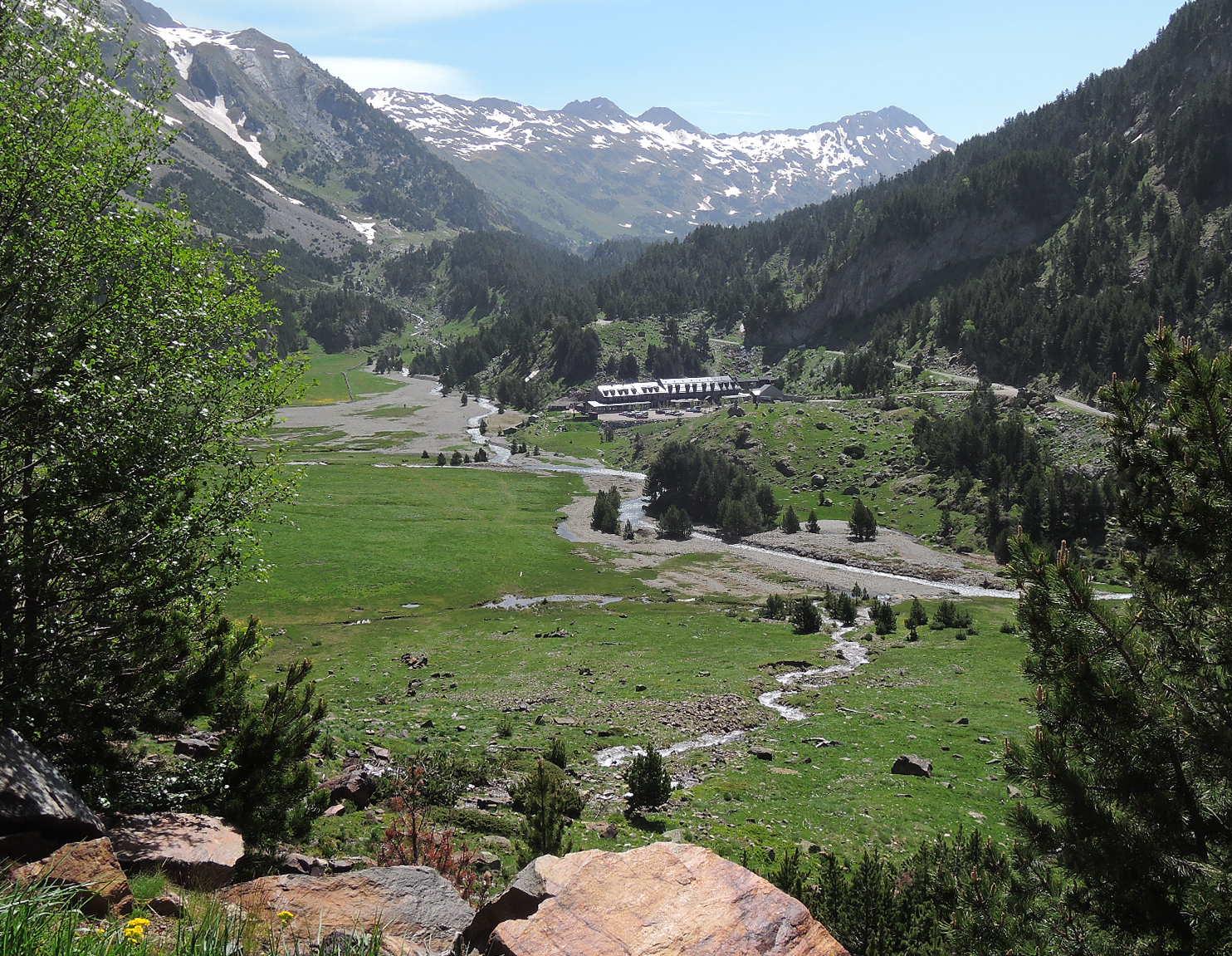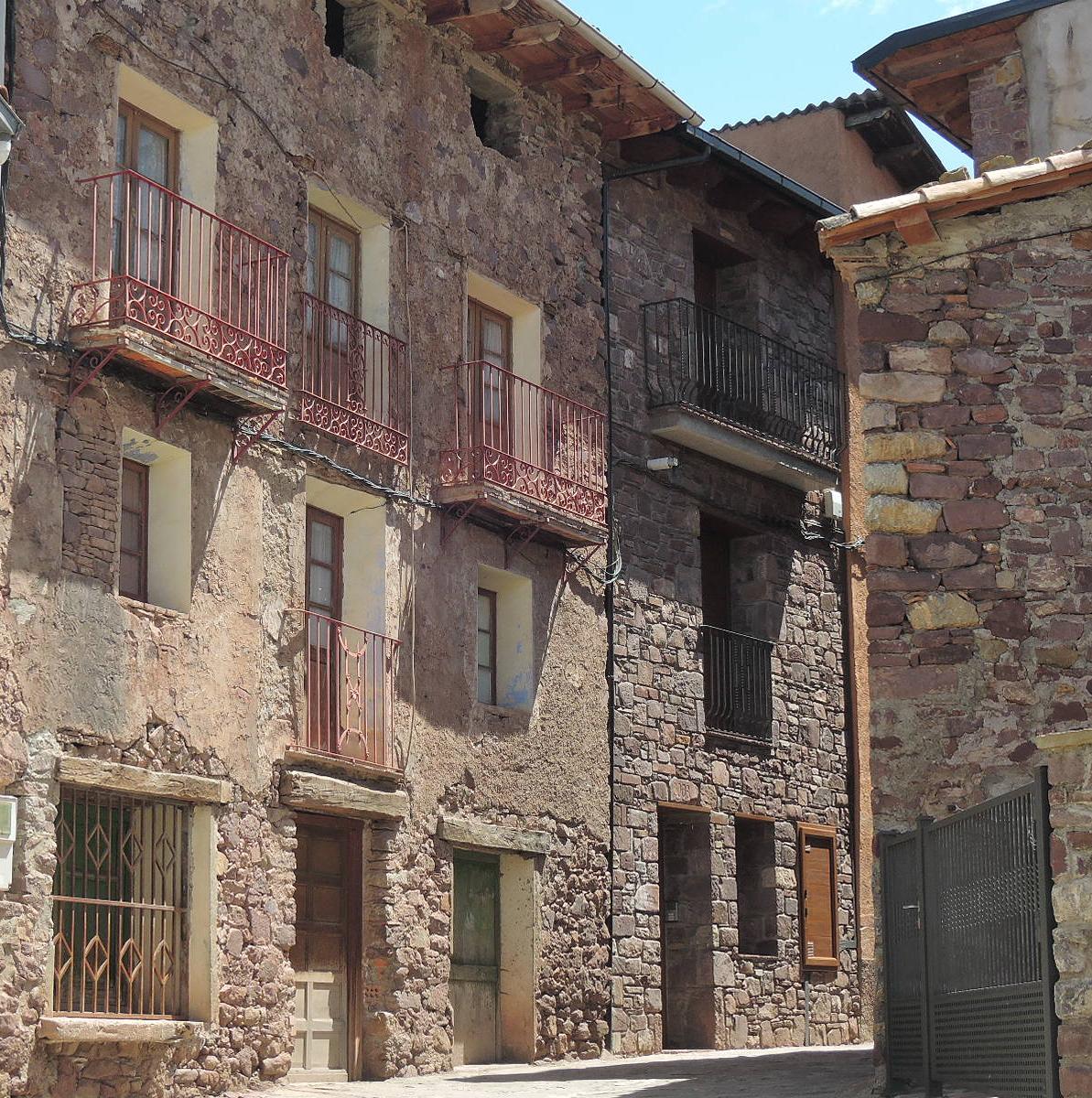When you come to think of it, you can’t but get surprised by the amount of wrong certitudes we take for granted, unmodified, along decades and, often, along our whole life. Ones more relevant than others, of course; many of them harmless, like the one I’m going to mention, but others lethal for our social life and our emotional welfare.
Maybe because it was taught to me at childhood or because I read it somewhere then, I had always believed that Andorra was a country socially and culturally midways between France and Spain, that French and Spanish languages were equally spoken there, and that Andorra’s tourism came equally from both neighbouring countries. It was necessary for me to travel to Andorra now, by chance, for realizing how wrong I was.
When I was still in Huesca I started noticing some cultural differences because there are many Catalan speaking citizens in its eastern half; and if there is one, just one decisive factor for diferentiating two peoples, such factor is the language. Language separates more than any law or border, and as much as distance. Sometimes, v.g., I wonder if the big cultural differences existing between Spain and Hispanic America are due to the distance that separates us or rather to our very different ways of using a supposedly common language. However it be, politicians have done an incredibly efficient job in dividing Spain by promoting Catalan as the virtually only lingua franca, the only common language in Catalonia, as whichever the cultural gap was (and the feelings!) between this region and the rest of Spain forty years ago, now it’s ten times wider.
But I’m digressing, as always.
From Sahún, where I spent the night, I went back to Castejón de Sos for continuing along the Pyrennean Axis towards Andorra. The first place I stopped at that morning was Noales, where my attention was drawn by the colour of the houses’ stones, and I could confirm once more than, of yore, the colour of the villages was almost identical to that of the land where they’re built, because until not so distant times the construction materials were extracted from Mother Earth wherever the houses were, or their surroundings, therefore they camouflaged with the earth: brown or reddish is the adobe depending on the places, grey are the ashlars in the Sierra de Madrid, as they come from granite, whitish are the walls of Cuéllar, ochre those of Olite’s castle, blackish the houses in the Pyrinees and reddish the stones with which Noales is built.
Right at the limits of Lérida province the route forks, and I, without any other criteria except keeping as close to the snow-capped peaks as possible, took the North branch. Whether I did the right thing or not I’m never going to know, but it could have hardly been better than the astounding places I went through.
I don’t remember having ever been before in the Bonagua mountain pass, yet I found it curious to see all those deserted winter facilities, the stalled aerials, the still ski lifts, the shop mall shut, the silent machinery and not a soul around. I approached the edge of the hillside, where the wind stirred the flowers, and I watched the inmense valley at my feet. It wasn’t easy to hold the camera still for taking a shot, because the wind gusts are strong in that place.
By the way, it was a good move to bring the jet helmet for this trip. While I was preparing the journey I pondered a lot about it: the integral is safer, more visible (I bought mine yellow) and better in case of rain, but the jet gives me a much wider and clearer visual field, more freedom of movement, makes it easier and faster to take a look to the GPS when I stop, and allows me to address people more openly, without hiding my face. As to safety, after all I’m doing an average speed of 52 km/h, so I’m not exposed to really violent crashes. Some will say a modular helmet has the advantages of both, and that’s true… if we don’t consider the weight, which is one of the most important factors for me: I’m no longer a kid and my neck vertebras would resent a lot if I had to carry almost two kilograms on the head five hours a day. The modular is too heavy. I’m glad I brought the jet, and I’m enjoying a lot with the landscapes and the feeling of freedom.
And so I arrived to Andorra, a country that hasn’t caused a big impression on me. It’s like the rest of the Pyrenees, only more populated. I’ve regarded it as a large shopping mall, a vast Pyrenean supermarket where people take a weekend trip to spend their money in shopping and restaurants not necesarily cheaper nor better than anywhere else in Spain. It’s a nice place, no doubt, but no more than any other part of the same mountain range. And the traffic on its roads is non stop, which makes it even less attractive.
Why Andorra exists at all I don’t know, but I guess it has a lot to do with taxes and very little to do with a “cultural identity”: contrary to what I had always had for certain, it’s not in between the two countries surrounding it, but Spain from head to toe; more precisely Catalonia. As a matter of fact, French people rarely go beyond Le Pas (right by their border), just for filling up (fuel is way cheaper than in Fance) and do some shopping. Most of the tourism is Spanish, and Catalan is the dominating language, though French is also official. It’s maybe closer to France in richness though, but then, which tax-free place isn’t rich?
Well, there’s actually another social side where it’s closer to France: people’s education. Contrary to Spain, in Andorra I’ve all the time been addressed in the formal way (non existing in germanic languages, but in latin ones), which is something that a man my age and mentality appreciates.
Like I did the day before, for finding accomodation I left the main route, and this time I ended up in Ordino, a little village with -needless to say- the same neat appearance as most of the others I’ve found along the Pyrenees.
While in Ordino, just for the fun of it, I rode until the end of the road that goes up the valley to the top of the basin, barely five hundred meters away from the peaks that make the border with France, from where I could gaze at the awesome sight. But I admit, I ended fed up with taking sharp road bends…





